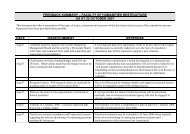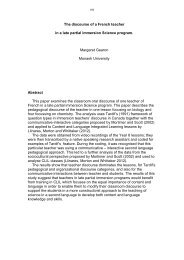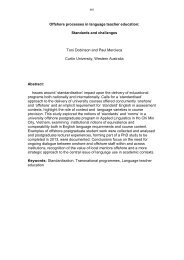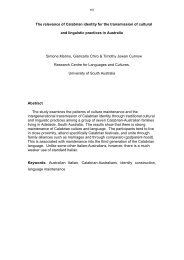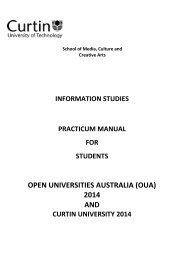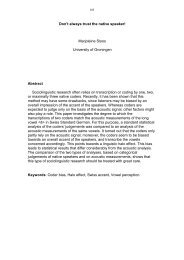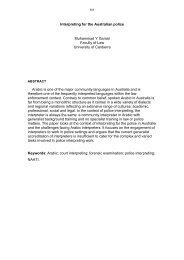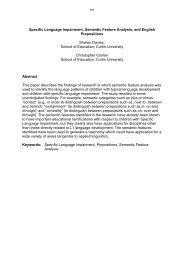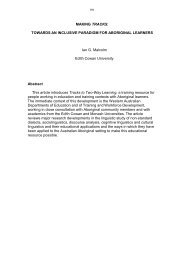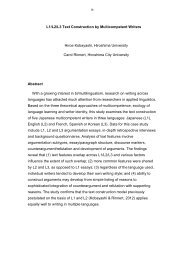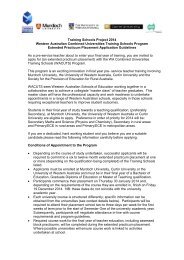Yi-chen and Huei-ling Lai - Humanities
Yi-chen and Huei-ling Lai - Humanities
Yi-chen and Huei-ling Lai - Humanities
- No tags were found...
Create successful ePaper yourself
Turn your PDF publications into a flip-book with our unique Google optimized e-Paper software.
615The idea of using metaphoric mappings as explicit instruction not onlyfollows the trend of cognitive <strong>ling</strong>uistics, which values awareness <strong>and</strong>motivation, but also deals with possible <strong>ling</strong>uistic <strong>and</strong> cultural gaps by utilizinglearners’ already-existent world knowledge <strong>and</strong> universal concepts. Theadoption of metaphoric mappings, thus, seems to be promising in helpinglearners associate conceptual domains <strong>and</strong> finding the motivations ofexpressions. However, such idea has not yet been tested empirically. Withoutempirical evidence, the proposed method has not been able to claim itseffects on L2 learning.The present study, therefore, intends to evaluate the twocognitive-oriented methods in teaching Chinese EFL learners metaphoric <strong>and</strong>metonymic expressions, determine their effects on L2 figurative languagelearning, <strong>and</strong> find a compromising way to teach EFL learners who speakdifferent native languages. The two methods under investigation include themethod of conceptual metaphor (CM), 1 which focuses on providingconceptual metaphors so that learners can compare two domains to findassociative characteristics, <strong>and</strong> the method of metaphoric mapping (MM), 2which emphasizes mapping processes that learners can use to map betweendomains <strong>and</strong> between cultures. The present study targets native Chinese




